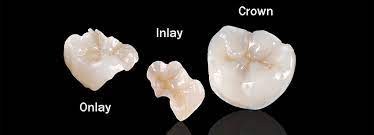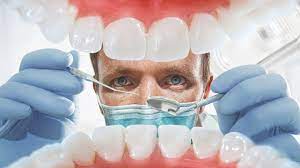Contents
Are Porcelain Inlays the Right Choice?
Porcelain Inlays Overview
Porcelain Inlays : Inlays are customized fillings made from tooth colored material that can be matched to the color of your teeth for a more natural look. They are used to cover areas of the tooth that are weak or have been filled so that structural integrity is compromised. Inlays vs. Onlays
Inlays and onlays are used to restore the tooth’s structure only. They are not designed to restore fractured or damaged teeth. Instead, they are used to correct cracked or damaged teeth. 교정전문치과 dental office.
Inlays and onlays are very effective in restoring the functionality of broken or damaged teeth. Because they are made from tooth-colored material, they create a very strong bond with the tooth’s surface. This helps maintain the original shape and structure of the tooth even after the repair. Because Inlays and Onlays are made from porcelain, they provide superior aesthetic results.
Inlays, onlays and crowns are used to stabilize the damaged teeth. They help maintain the stability of the tooth and avoid its tip or edges from cracking. These parts of the dentistry procedure help you maintain the integrity of your tooth and avoid embarrassing moments like the unravelled hair.
How Inlays and Onlays Are Fitted?
Two types of fitting are available — absolute positioning and relative positioning.
absolute positioning involves the placement of the dental impression of the upper and lower teeth. The impression is taken in a dental office and used to create a plaster model of your teeth. The model is used to create a corresponding impression of the teeth in your mouth.
Since the impressions and plaster models must be made at the same time, the dentist will prefer to have impressions made in the dental office first. Inlays and onlays are then fitted based on these impressions.
Relative positioning is the method of fitting that is used when both the upper and lower teeth are being considered for restoration. In this method, the back parts of the teeth are considered for restoration. Both the impression and the plaster models are again made at the laboratory. The dentist will then recommend to you the size of the inlay and onlay that will be used for your teeth.
Generally, inlays and onlays are used for replacement of single teeth. But, it is possible to have them also used for multiple teeth. In this case, you will need to select the correct size and shape for the inlays and onlays.
The Inlays and Onlays: Which is Best?
There are two inlays and onlays that are considered by many dentists to be the best. These are the full metal inlays and the tooth-colored inlays.
The full metal inlays are the conventional inlays which are made from Sweden. These are the ones that are anchored by the metal brackets. They are relatively large in size and can take a lot of chewing until they become thinner.
They are prone to breakage when they are used for the replacement of single teeth. Sometimes, a flipper or an implant can be used instead of the inlay. The flipper is a false tooth that is similar to aogging. It is molded from a plastic material that can shift the position of the ibis to accommodate a denture. Hence, if the flipper is used, the overall effect is similar to that of an implant.
On the other hand, the tooth-colored inlays are preferred for their cosmetic value. They are made from porcelain material which blends with the color of the teeth. The cosmetic quality of inlays is comparable to that of porcelain veneers.
The dental care expert will recommend to you the size and the shape of the inlay you need. Generally, the inlay is shaped such that it covers the entire surface of the tooth. But, as every case is different, the shape of the inlay is decided by you.
The procedure for inlays and onlays is very simple. The only thing that you need to consider is that you need to prepare the tooth surface by the removal of the enamel. This will leave a rough surface. You will then be able to receive the inlay by grinding the surface with a spoon.
The inlay will have to be heated in a saucepan, while the spoon will be kept at a low heat. When both the ingredients have reached the desired consistency, the mixture is then poured into the prepared inlay and fitted it to the tooth.
Do You Need Treatment for rag Mouth?
If you have already experienced one or more of the following symptoms, then you may need to undergo treatment for rag mouth.

